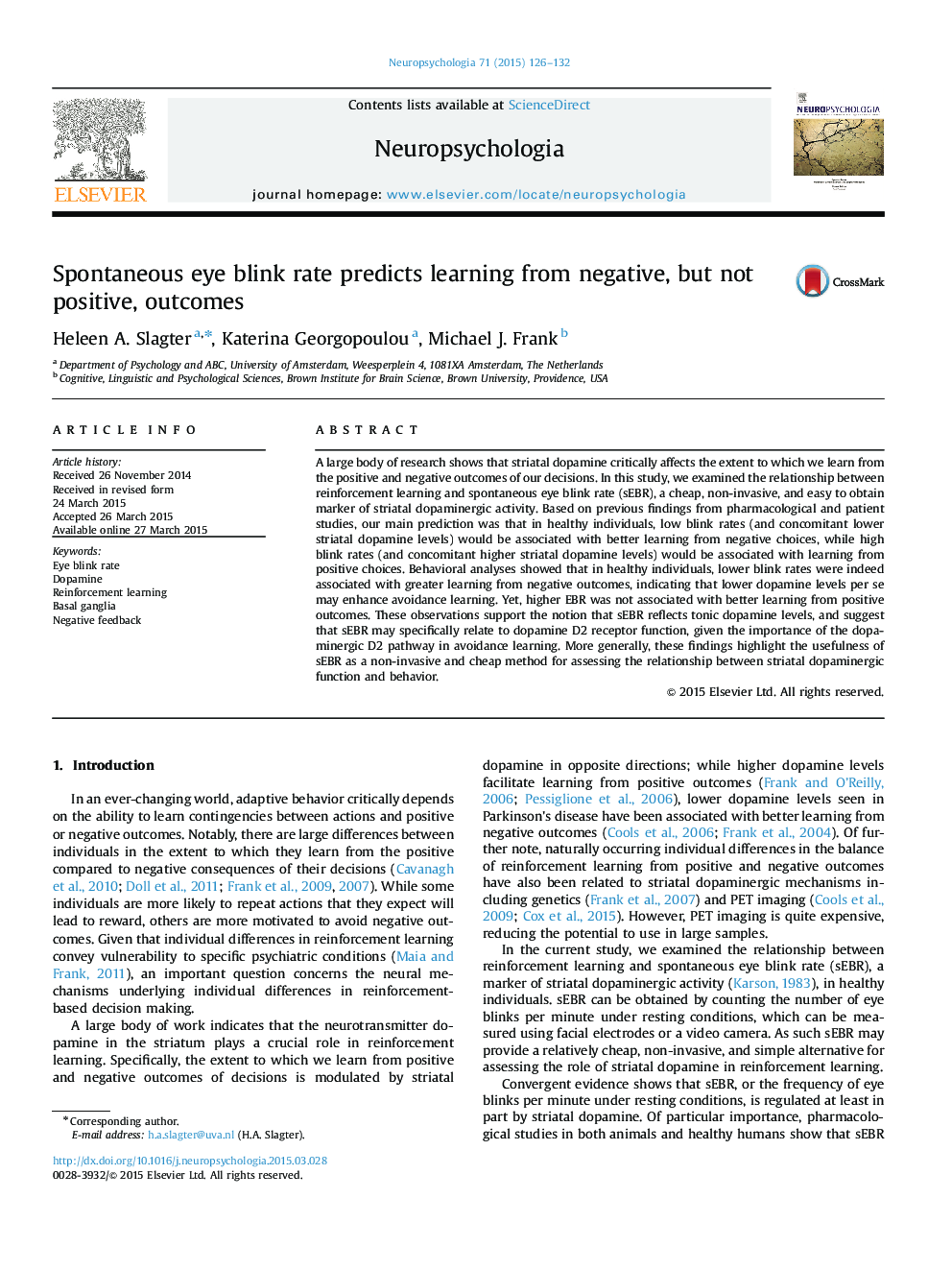| کد مقاله | کد نشریه | سال انتشار | مقاله انگلیسی | نسخه تمام متن |
|---|---|---|---|---|
| 7320223 | 1475582 | 2015 | 7 صفحه PDF | دانلود رایگان |
عنوان انگلیسی مقاله ISI
Spontaneous eye blink rate predicts learning from negative, but not positive, outcomes
ترجمه فارسی عنوان
میزان چشم خود به خودی پیش بینی می کند که یادگیری از نتایج منفی، اما نه مثبت
دانلود مقاله + سفارش ترجمه
دانلود مقاله ISI انگلیسی
رایگان برای ایرانیان
کلمات کلیدی
موضوعات مرتبط
علوم زیستی و بیوفناوری
علم عصب شناسی
علوم اعصاب رفتاری
چکیده انگلیسی
A large body of research shows that striatal dopamine critically affects the extent to which we learn from the positive and negative outcomes of our decisions. In this study, we examined the relationship between reinforcement learning and spontaneous eye blink rate (sEBR), a cheap, non-invasive, and easy to obtain marker of striatal dopaminergic activity. Based on previous findings from pharmacological and patient studies, our main prediction was that in healthy individuals, low blink rates (and concomitant lower striatal dopamine levels) would be associated with better learning from negative choices, while high blink rates (and concomitant higher striatal dopamine levels) would be associated with learning from positive choices. Behavioral analyses showed that in healthy individuals, lower blink rates were indeed associated with greater learning from negative outcomes, indicating that lower dopamine levels per se may enhance avoidance learning. Yet, higher EBR was not associated with better learning from positive outcomes. These observations support the notion that sEBR reflects tonic dopamine levels, and suggest that sEBR may specifically relate to dopamine D2 receptor function, given the importance of the dopaminergic D2 pathway in avoidance learning. More generally, these findings highlight the usefulness of sEBR as a non-invasive and cheap method for assessing the relationship between striatal dopaminergic function and behavior.
ناشر
Database: Elsevier - ScienceDirect (ساینس دایرکت)
Journal: Neuropsychologia - Volume 71, May 2015, Pages 126-132
Journal: Neuropsychologia - Volume 71, May 2015, Pages 126-132
نویسندگان
Heleen A. Slagter, Katerina Georgopoulou, Michael J. Frank,
